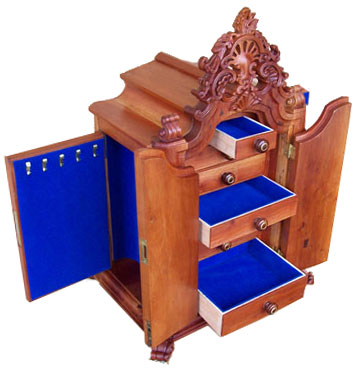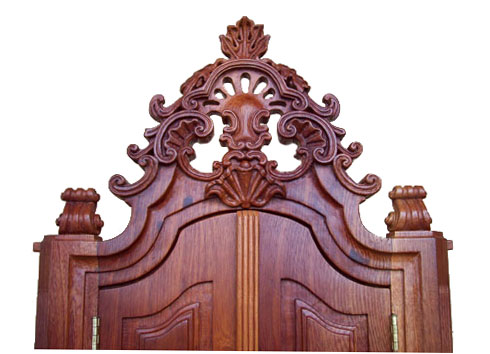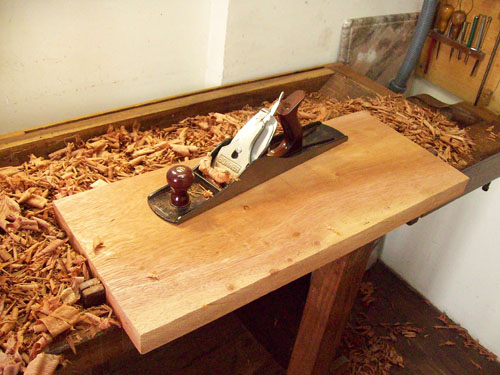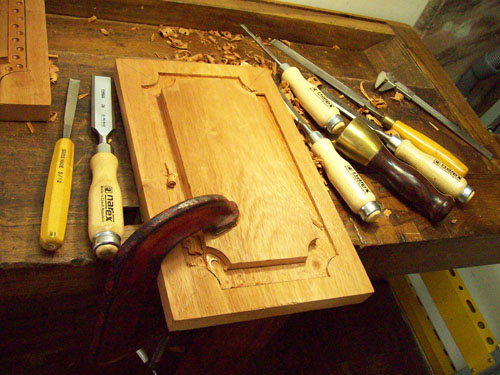Hi fellow Woodworkers,
(Dilo rides again… after a quite long break!)
This time I am showing you a tiny chest of drawers specially designed by me in the Baroque
style and intended to satisfy a need for fancy storage from a clever collector of jewels, watches or
pens. It has a pair of front doors with a lock that encloses seven small drawers and two large lateral
doors with locks that close two side compartments.
A major fact that must be said is that this is the first time in my life that I am creating a woodwork
intended for sale. I am sure that I will have a very hard time in selling it at a fair price (not
degraded) since the modern Brazilian “culture” does not recognize woodwork as artwork. So, I will
have to make my strategy towards the likely target buyers, and consider some changes in my typical
working patterns. I will have to be bold enough to face this new way of thinking.

|

|
Aiming at that commercial purpose I had to make a fundamental change in my mind: to replace the
wood I had long been working with - the Rio-rosewood (Dalbergia nigra) - for Canjerana (Cabralea
multijuga) which is quite similar to the Spanish-cedar (Cedrela odorata). The main reason is the
Rio-rosewood’s rarity and its extreme carving difficulty, qualities which prospective customers
will never recognize and pay accordingly. The secondary reason is the unique Canjerana’s property of
changing its own color from the original pinkish to a beautiful dark purple, by just suffering a
quick action of the air/sunlight.

|

|
I bought a rough board of salvaged and cup-warped Canjerana (90” x 16” x 1 ½ ”) with bug holes
and some sapwood. However, I did not take it to be machine-processed into the necessary thinner
pieces because I could not allow any waste produced by the planer and the table saw, since it would
reduce dramatically the usable wood. Instead, I cut all the thinner beams and boards using just a
handsaw and planed them individually by hand. Although its cedar-like consistency is the usual
standard among Brazilian carvers, it looked to me rather as a mild slab of beeswax. So the effective
woodworking time that I spent on the Canjerana wood was about one quarter of the whole time that I
would have spent on the Rio-rosewood.
It was entirely made in my closet-size workshop during my spare time and took 4 ½ months to be
completed, including its blue velvet lining. The finishing was done with a personally prepared wax
(carnauba, beeswax, turpentine). Exclusively hand tools were used.
Dimensions: 27” high x 20” wide x 16” deep
Best regards,
Dilo Marcio Fernandino
Belo Horizonte, MG, Brazil
